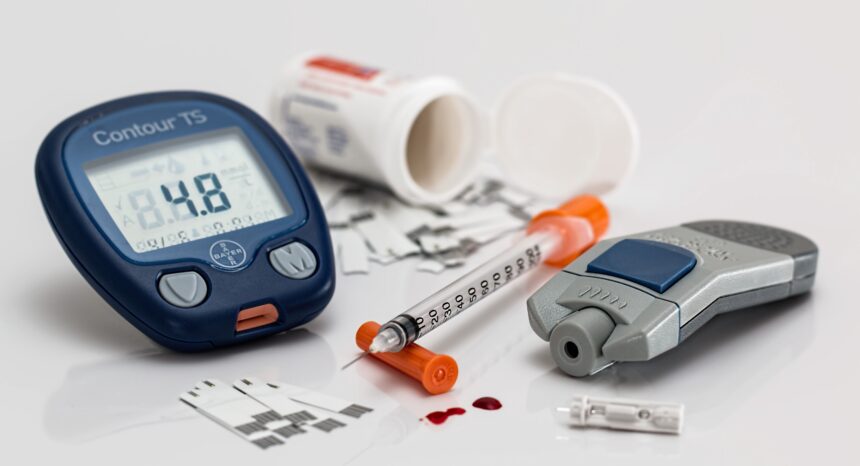Type 1 diabetes diagnoses have risen rapidly for Hispanic youth in comparison to other racial and ethnic groups, a recent study finds.
The issue: Chronic illnesses such as diabetes present ongoing challenges to healthcare providers, insurers and the general public. Previous research on American healthcare spending suggests diabetes is the nation’s costliest illness, with expenditures reaching approximately $101.4 billion in 2013. The prevalence of diabetes is increasing for Americans of all ages, partly because of growing national obesity rates. Obesity and type 2 diabetes, which is characterized by an inability to effectively produce and use insulin the body makes to manage blood glucose levels, are linked. Type 1 diabetes is characterized by the body’s lack of insulin due to autoimmune attacks on beta cells in the pancreas.
Though diagnoses of both type 1 and type 2 diabetes are on the rise, there are variations in how different groups are affected by this broader trend. A new study suggests that the incidence of type 1 and type 2 diabetes has increased for minority youths more than for their non-Hispanic white peers.
An academic study worth reading: “Incidence Trends of Type 1 and Type 2 Diabetes Among Youths, 2002-2012,” published in The New England Journal of Medicine, 2017.
About the study: A team led by Elizabeth J. Mayer-Davis from the University of North Carolina at Chapel Hill examined data from the national SEARCH for Diabetes in Youth study, which comprised 11,245 youths with type 1 diabetes and 2,846 with type 2 diabetes. The researchers sought to better understand specific trends in diagnosis rates of diabetes in youth.
For inclusion in the SEARCH study, subjects had to be younger than 20 years old and diagnosed by a physician. Data was collected primarily from five clinical centers in California, Colorado, Ohio, South Carolina and Washington.
Using this data, Mayer-Davis’s team calculated annual incidence rates and conducted comparisons among the country’s five major racial and ethnic groups: non-Hispanic white, non-Hispanic black, Hispanic, Asian or Pacific Islander, and Native American. This work built on the conclusions of the SEARCH study, partly by looking at diabetes diagnoses over a longer time period.
Key findings:
- From 2002 to 2012, the annual increase in diagnosis rates for type 1 diabetes was 1.8 percent; for type 2 diabetes, this figure was 4.8 percent.
- Whites had the smallest increase in diagnosis for type 1 diabetes. Diagnoses rose 1.2 percent per year for white youth compared to 2.2 percent annually for black youth.
- Hispanic youths had the highest increase in incidence of type 1 diabetes (4.2 percent annually).
- White youth did not experience a statistically significant increase in type 2 diabetes incidence between 2002 and 2012.
- The type 2 diabetes diagnosis rate for Asian-Pacific Islander youth increased 8.5 percent a year. It rose 8.9 percent a year for Native American youth. There is concern, however, about whether findings for Native American youth can be generalized to the national population because data for this study was collected from youth from a narrow geographic area.
Other resources:
- The National Institute of Diabetes and Digestive and Kidney Diseases highlights current research on diabetes.
- The U.S. Centers for Disease Control and Prevention collects diabetes data at the national, state and county level.
- The American Diabetes Association publishes a few journals that feature current diabetes research.
- The Mayo Clinic provides information on risk factors, causes, and symptoms of type 2 diabetes in children.
Related research:
- A 2015 study published in Pediatrics, “Racial-Ethnic Disparities in Management and Outcomes Among Children with Type 1 Diabetes,” indicates that white children used insulin pumps at higher rates than black and Hispanic youth.
- A study that Mayer-Davis co-authored for Diabetes Care in 2014, “The SEARCH for Diabetes in Youth Study: Rationale, Findings, and Future Directions,” describes a significant increase in prevalence of type 1 and type 2 diabetes from 2001 to 2009.
- A 2014 study published in JAMA Pediatrics, “Prevalence and Trends in Obesity and Severe Obesity Among Children in the United States, 1999-2012,” finds significant increases in rates of obesity among black males and Hispanic females.
- A 2009 study led by Diana Petitti of the University of Arizona College of Medicine, “Glycemic Control in Youth with Diabetes: the SEARCH for Diabetes in Youth Study,” assessed HbA(1c) levels, an indicator of glycemic control, in American children. The researchers found that black, Native American, Hispanic and Asian-Pacific Islander youth had significantly higher HbA(1c) levels than non-Hispanic white youth, which indicates poorer glycemic control among these minority groups.


Expert Commentary